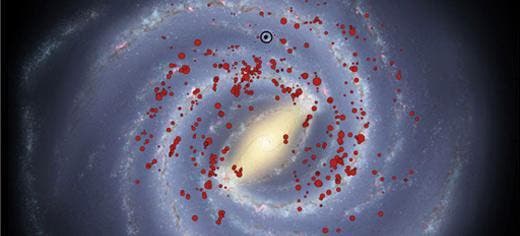There has been a debate over the number of spiral arms the Milky Way galaxies has, due to mixed results in the past. For years, it was believed the Milky Way had four spiral arms, but in 2008 readings from the Spitzer Space Telescope suggested it actually had only two. Wouldn’t you know it, a new study that looked at young and massive star found that the Milky Way must have four arms.
Four arms, not two, survey suggests
From our perspective, it’s impossible to simply pan out and have a view of how the Milky Way looks like. Most certainly you’ve seen quite a couple of beautiful renditions of the Milky Way – most of which with two spiral arms – however these are all artist impressions. Simple computer generated graphics based on scientists’ description. Raw data is everything we have at the moment to interpret the size, shape and structure of our very own galaxy.

A 12-year study of massive stars has reaffirmed that our Galaxy has four spiral arms, following years of debate sparked by images taken by NASA’s Spitzer Space Telescope that only showed two arms. (c) University of Leeds
James Urquhart at the Max Planck Institute for Radio Astronomy in Bonn, Germany and team recently performed a survey of massive stars from the Milky Way. Since massive stars fly high and die fast – they only last for some 10 million years or so – meaning that they are only found in the arms in which they formed, which could explain the discrepancy in the number of galactic arms that different research teams have claimed. The controversial 2008 Spitzer survey analyzed some 110 million stars, most of which were cooler, lower-mass stars – stars like our sun. These are much more numerous than the massive and bright stars targeted by the present study.
“It’s exciting that we are able to use the distribution of young massive stars to probe the structure of the Milky Way and match the most intense region of star formation with a model with four spiral arms,” said Urquhart.
Several radio telescopes in Australia, the U.S. and China were used to observe about 1,650 massive stars over the course of 12 years. Scientists calculated the distances and luminosities between them and came up with a spatial distribution that suggests a four spiral arm galaxy.
“Star formation researchers, like me, grew up with the idea that our galaxy has four spiral arms. It’s great that we have been able to reaffirm that picture,” said astronomer Melvin Hoare at the University of Leeds, a co-author of the research paper.
Findings were reported in a paper published in the Monthly Notices of the Royal Astronomical Society.









